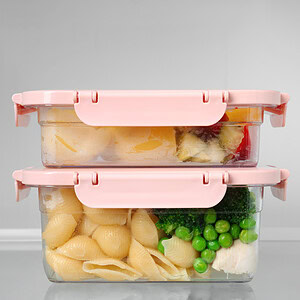From choosy chompers to slow munchers, family mealtimes can often feel more like a battlefield than a bonding experience. Mum-of-three and trained nutritional therapist Catherine Morgan explores strategies for positive and peaceful dining.
When it comes to family mealtimes, one might expect it all to be smooth sailing by the time Child 3 comes along. Yet, this hasn’t been the case – at least in our household. Despite the lessons learned from previous food battles when my boys were younger, my four-year-old brings her own challenges to the kitchen table and I find myself repeating some of the same hopeful tactics to persuade her to eat: negotiation, reward, bribery, and so on.

Despite my nutritional therapy training – and thus a reasonable grasp of what should (and shouldn’t) be on the menu – the reality is that it can be hard going getting children to eat what (and when) you want them to; and this is especially true of my own strong-willed wonder.
On the plus side, Child 3 will happily consume raw vegetables and fruit – hurrah! But mealtimes can be painfully slow, especially if it’s not pasta or pizza; and whilst I firmly believe that mealtimes should be calm, relaxed and enjoyable, my own patience does start to wear a little thin when the food remains largely untouched an hour later, and the boys have long disappeared from the table. Strangely enough we never have this issue when it comes to pudding.
But I’m not alone. Many parents face daily food-related stand-offs with their youngsters – and it can be thoroughly exhausting. So, what’s the answer?
Because each child has unique challenges, needs and personality traits, there is no ‘one size fits all’ solution; but there are strategies to help encourage better eating habits.
For slow eaters like mine, this might mean setting a time-limit for meals (around 30 minutes), says registered nutritional therapist and health coach Alison Peacham. “Anything that drags on too long isn’t fun and can feel stressful for both of you,” she says – and she’s not wrong there. “If the food isn’t eaten, take it away – but avoid offering more until the next scheduled meal or snack time. You can set the food aside with a lid, so it’s available for later, reheated if necessary.”
Peacham, who specialises in family health and children’s nutrition, points out that slow eating is very common, and children’s appetites can fluctuate. “What they happily eat one day might be rejected the next,” she says. “Picky eating or taking their time with meals can be a way for a child to assert their independence, which can understandably be frustrating.”
In her own clinic, Peacham oftens sees picky eaters, especially among neurodivergent children, where food-related issues go beyond preference. “For some, the appearance, taste, smell and texture of food become overwhelming sensory experiences that make eating a constant challenge,” she says. “With time and the right support, practical strategies can help children feel more at ease and confident with food.”
Here are Peacham’s three top tips for encouraging healthy eating habits:
- Make mealtimes happy, regular and social occasions – creating a positive atmosphere during meals helps reduce stress and anxiety around eating, says Peacham. “When mealtimes are enjoyable, and involve family interaction, children are more likely to engage with food and develop a healthier relationship with it.” Her advice: offer plenty of praise for positive eating behaviours and try to ignore fussiness. “Giving attention to picky eating can reinforce the behaviour, so it’s best to stay calm and avoid focusing on it,” she says.
- Introduce new foods gradually and without pressure – when introducing unfamiliar foods, Peacham recommends doing it slowly and without making it a big deal. “Offering new options alongside familiar favourites allows children to explore food at their own pace and reduces resistance, especially for those with sensory sensitivities,” she says. Also, don’t give up after the first refusal – keep offering foods that were previously rejected: “It can take 10 to 15 attempts before a child even tries a food they’ve turned down before. It’s frustrating, but remember, you’re helping them build healthy habits for the future.”
- Offer a variety of healthy foods without forcing them to eat – according to Peacham, children are more likely to develop healthy eating habits when they’re exposed to a range of nutritious options regularly. “Providing a variety of colourful, appealing foods and allowing children to choose what they want to eat from the selection fosters independence and encourages healthier choices,” she says. “Make food fun whenever you have time – cut sandwiches into interesting shapes, arrange food to create a face or involve your child in preparing the meal. These small touches can make mealtimes more enjoyable and encourage your child to engage with different foods.”

Let’s just say that I’ve tried it all – or at least a lot. Inclusion has certainly been one helpful strategy in our house, so I try to involve my kids in preparing meals when possible as well as planning what we’re going to eat (to some extent!); we even grow some of our own ingredients during the warmer months – with varying degrees of success. Most children love to roll up their sleeves and get involved, and they’re more likely to try foods if they are connected to the process of getting them to the table. Plus, if they’re anything like mine, half of the ingredients will be eaten along the way.
For children who are reluctant to eat their greens (or reds, oranges or any other coloured vegetables), it might be helpful to serve a portion of veggies first as this has been shown to increase intake.¹ Also, many children prefer raw vegetables, so just because they turn their little noses up at cooked pepper, it doesn’t mean they won’t like it raw – as is the case for Child 3, who would happily eat a raw bell pepper like an apple but is seriously displeased when she discovers a piece of cooked pepper in her meal.
Other strategies include removing distractions such as iPads/phones and toys from the table (or even a paperclip if your children are anything like Child 1, who at the age of 10 is very easily distracted at mealtimes), as well as leading by example. Children model the behaviours of those around them – both good and bad – so parents, siblings and peers can have a huge influence. For this reason, I do try to eat with them as often as possible.
It’s also important to have realistic expectations – sometimes I forget I’m dealing with a four-year-old, with big emotions and a little tummy. It’s normal for her to want to have some control of her food intake and she doesn’t need to eat as much as her big brothers.
On a final note, I’m trying not to stress. I’ve been here twice before and realise that when it comes to children, a lot of behaviours are simply a passing phase. And whilst it’s important to seek professional advice if needed, many of the food battles people have with their younger children will one day be a distant memory and there will be other challenges to contend with – like how to afford three ravenous teenagers as they eat you out of house and home.






